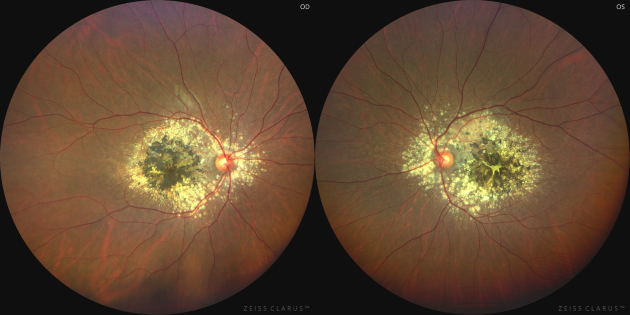Special |
Collections
Filters
-
Collection Type
-
-
Special |
 Ocular Oncology
Ocular Oncology
Ocular oncology occupies a unique position in ophthalmology. Not only are these conditions sight threatening, but they are also capable of eye loss, and many have the potential to shorten life. This issue, borne out of the symposium “Ocular Oncology Demystified” at The Royal College of Ophthalmologists, is dedicated to our late colleagues, Victoria Cohen, FRCOphth and John Hungerford, FRCS, FRCOphth.
Image: Dr Fiona Roberts, Consultant Ocular Pathologist, Queen Elizabeth University Hospital, Glasgow -
Special |
 Translational Medicine
Translational Medicine
This Special Issue of Eye highlights the accelerated pace of translational research in the field of retinal vascular diseases and age-related macular degeneration. Each review demonstrates significant strides in our understanding of these conditions and yet frustratingly also highlights gaps in our knowledge. Whilst the discovery of the first anti-vascular endothelial growth factor (VEGF) therapy initiated a paradigm shift in the management of most of these conditions, these reviews highlight that we have just scratched the tip of the iceberg of molecular mechanisms responsible for these devastating conditions. For example, while durability remains a major issue with anti-VEGF therapy and we welcome novel agents that could reduce treatment burden, another ‘me-too’ anti-VEGF agent is not going to improve the current benchmark of visual outcome set by current anti-VEGF trials for these indications. A clear dissociation between improvement in diabetic retinopathy severity grades with anti-VEGF therapy and the progression of retinal capillary non-perfusion in diabetic retinopathy is an example that demonstrates the need to target other molecular mechanisms and disease pathways. Similarly, fibrosis and atrophy are key sequelae of several retinal diseases, and these remain untreatable and need to be prevented. Failed trials provoke the need for novel end-points and yet regulatory authorities need to be convinced that these end-points are beneficial to patients. Although better phenotyping with technological advancements in retinal imaging may facilitate better predictive models on outcome date, we should not forget that inflammation is a key driver of retinal and choroidal diseases and failed clinical trials. Identifying and exploiting the ideal inflammatory pathway(s) will likely yield clinically meaningful advances in therapeutics soon. Moreover, research into the crosstalk between metabolic pathways and inflammation is also gathering momentum. Regardless of the challenges faced with novel therapies, the reviews in this issue shows that the interface between basic and translational science is well-established in this field and we look forward to more discoveries and break-through therapies for these conditions.
Image: Robert Mullins -
Special |
 Imaging
Imaging
In this special issue on Imaging, we have included a comprehensive collection of updates on ocular imaging that are applicable to all fields in Ophthalmology. The imaging topics are diverse and cover basic science research and clinical applications, anterior or posterior segment imaging, imaging in conditions affecting adults or children, applications in primary care or secondary care and imaging in both rare and common diseases.
Image: Piyush Kohli, Chitaranjan Mishra, Naresh Babu Kannan, Bharathi Singaravel; Department of Vitreo-Retina, Aravind Eye Hospital, Madurai, Tamil Na-du, India -
Special |
 Glaucoma 2020
Glaucoma 2020
This is a special issue in a special year when we will reflect on the achievements (and challenges) of VISION 2020, a global WHO initiative that aimed to eliminate avoidable blindness. Much progress has been done to improve health outcomes in people with glaucoma but it is humbling to reflect on the burden of glaucoma, still a leading cause of blindness in the developed world and much of it preventable. The challenge of preventing blindness and providing glaucoma care in low-to-middle outcome countries are gigantic. In this special issue we have included some of the most relevant and exciting developments both in translational and clinical research. The efforts of many talented and dedicated individuals and organisations working towards prevention and treatment of glaucoma will continue to make a difference. We would like to thank all authors for their generous contributions. Anthony Khawaja and Augusto Azuara-Blanco
-
Special |
 Asian Perspectives on Eye Diseases
Asian Perspectives on Eye Diseases
This collection provides a wide spectrum of reviews on prevalent eye conditions in Asia. Areas of focus include new insights on Pachychoroid, the much awaited role of artificial intelligence in the screening of diabetic retinopathy, control of myopia, acute angle closure glaucoma and infectious and non-infectious disease of particular relevance in Asia.

 Global Eye Health
Global Eye Health